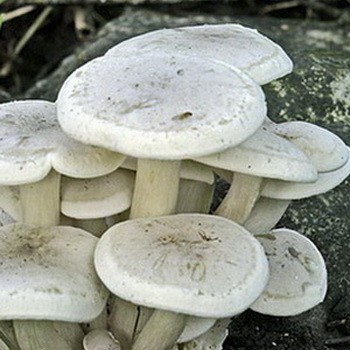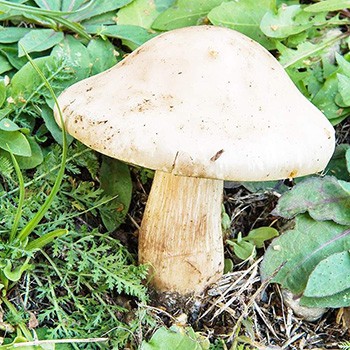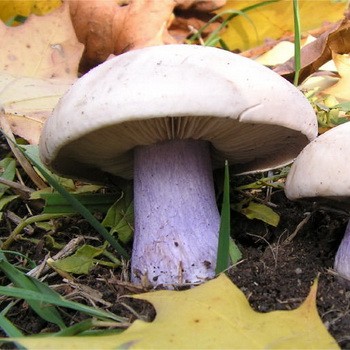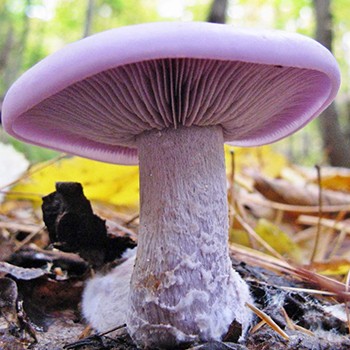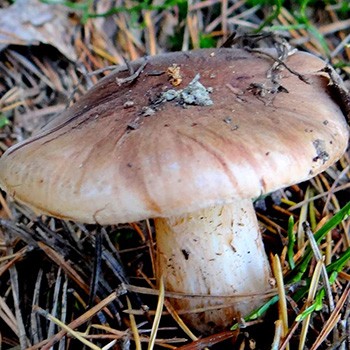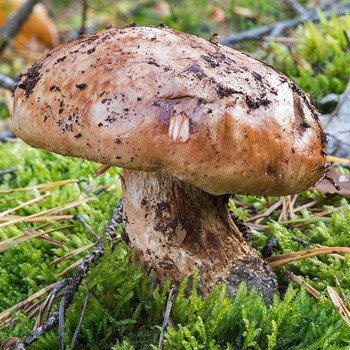Mushroom pink rowovka: photo, description and processing
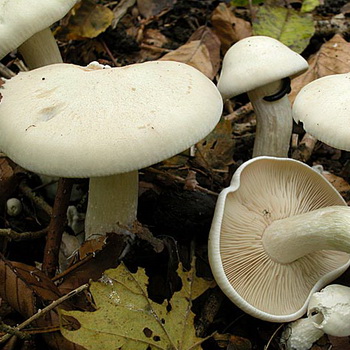
We suggest that you familiarize yourself with the description and photos belonging to the pink row in more detail.
Description of the pink row (Lepista irina)
Latin name: Lepista irina.
Family: Ordinary (Tricholomataceae). In some sources, this type of fungus was transferred to the genus Govorushka (Clitocybe).
Synonyms: rowaceae violet, lepista violet. Latin synonyms: Clitocybe irina, Gyrophila irina, Tricholoma irinum, Agaricus irinus, Rhodopaxillus irinus.
Hat: rather large, 5-15 cm in diameter, fleshy, in young specimens presented in the form of a sphere. Then it takes on a bell-shaped form and already in deep adulthood becomes prostrate, with wavy uneven edges. The surface of the cap is dry and smooth to the touch. The color is white with a noticeable pink tint, which in maturity becomes reddish-brown. The site located in the center of the cap has a darker shade than at the edges.
Leg: 5-11 cm in height, up to 2 cm thick, strong, fibrous, slightly expanded at the base, sometimes even.
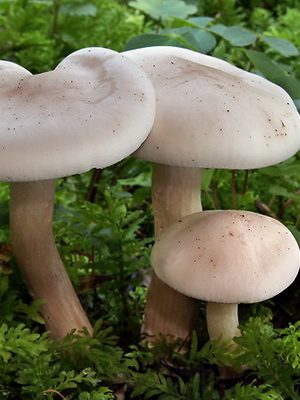
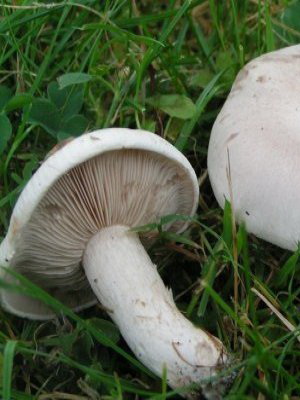
The photo shows that in the row of pink legs covered with characteristic vertical strokes, but they can not always be seen. The surface may be whitish, pale or pink-cream.
Pulp: thick, dense, white, pleasant floral smell and sweet taste. The pulp of the leg is fibrous and quite stiff, especially at the base.
Records: free, frequent, adhered to the leg, sometimes not reaching it. The color of the plates in young mushrooms is whitish, after which they turn pink, and in maturity a delicate shade resembling the color of cinnamon is noticeable.
Edibility: edible fungus, however, cases of mild poisoning have been known. Apparently, this is due to the fact that the mushroom was collected in ecologically polluted places - near factories, highways and other industrial enterprises.
Application: There are many processing methods for pink row mushrooms. Most often they are pickled, salted and fried. Sometimes the fruiting body is frozen or dried.
Spread: European countries, as well as North America. In Russia, pink mushrooms can be found in Primorsky and Khabarovsk Territories, as well as in the Amur Region. It grows in groups, rows, choosing mixed, coniferous and deciduous forests. It occurs in the fall (end of August-October), forming “witch rings”. It grows simultaneously with a row of purple (Lepista nuda) - an edible mushroom. Often both species are found in the same places.
The distribution of pink rows in Primorye
Ryadovka is considered one of the most common fruiting bodies in the Primorsky Territory. This mushroom prefers sandy soil, covered with moss, settles in pine trees, sometimes in parks and gardens. Harvest peaks in September and early October. Pink rowing is no exception - it can be found almost everywhere in Primorye.After all, it is known that broad-leaved cedar and dark coniferous-cedar forests are widespread throughout the territory of this region. In addition, in Primorye there is a monsoon, warm climate, characterized by a large amount of rainfall. In turn, these conditions are excellent for growth and abundant fruiting of mushrooms.
